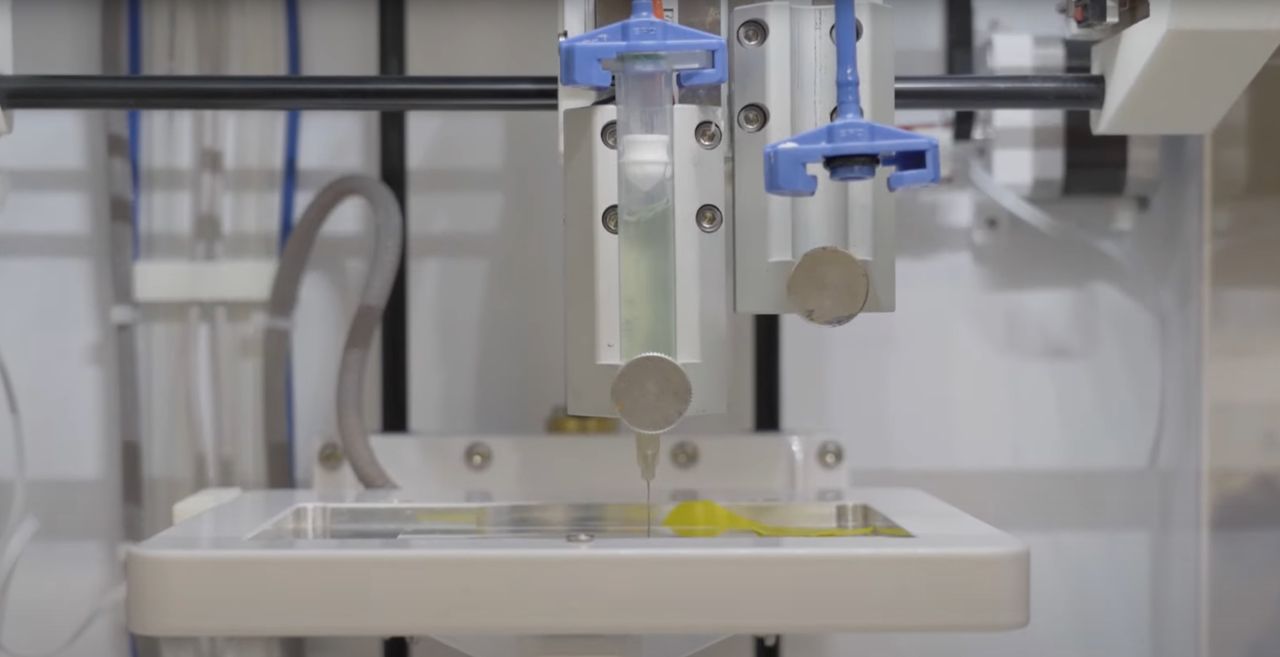
An interesting project at UCSD pairs living cells with polymer 3D printing.
The research project intended on devising a method of decontaminating water, a growing issue in many regions. Currently this is done with conventional filters, or more typically, not done at all.
Their concept was to produce an “engineered living material” composed of a polymer structure infused with genetically modified bacteria. The bacteria were designed to consume certain undesirable organic molecules and transform them into benign substances using biological methods.
The polymer used was actually derived from seaweed, making the polymer more eco-friendly. UCSD explains:
“To create the living material in this study, the researchers used alginate, a natural polymer derived from seaweed, hydrated it to make a gel and mixed it with a type of water-dwelling, photosynthetic bacteria known as cyanobacteria.”
Why not just dump the bacteria into the contaminated water? There are a couple of reasons.
First, since the bacteria is genetically modified, it’s not intended to escape into the environment. Therefore the bacteria must be “caged” in some manner, yet still exposed to the contaminated water.

Secondly, the 3D printed structure provides a way to maximize the surface area of water exposed to the bacteria, as well as the required nutrients and sunlight. This is done by developing a suitable complex geometry that’s easily produced using 3D printing.
Finally, because the bacteria remain captured in the structure, it’s possible to deactivate them.
How is that done? The researchers produced a particular chemical, which, when encountered by the bacteria, causes them to die off. Apparently the researchers are working on a method to have the bacteria automatically expire when their job is complete, but that’s for a future project.
This video shows the printing process, as well as an experiment where the bacteria were able to successfully remove a common industrial dye from a water sample:
This is a fascinating research project that might not only lead to a safe method of cleaning up contaminated water, but also demonstrates that it’s possible to combine genetic engineering and 3D printing in a way not previously envisioned.
Via UCSD
